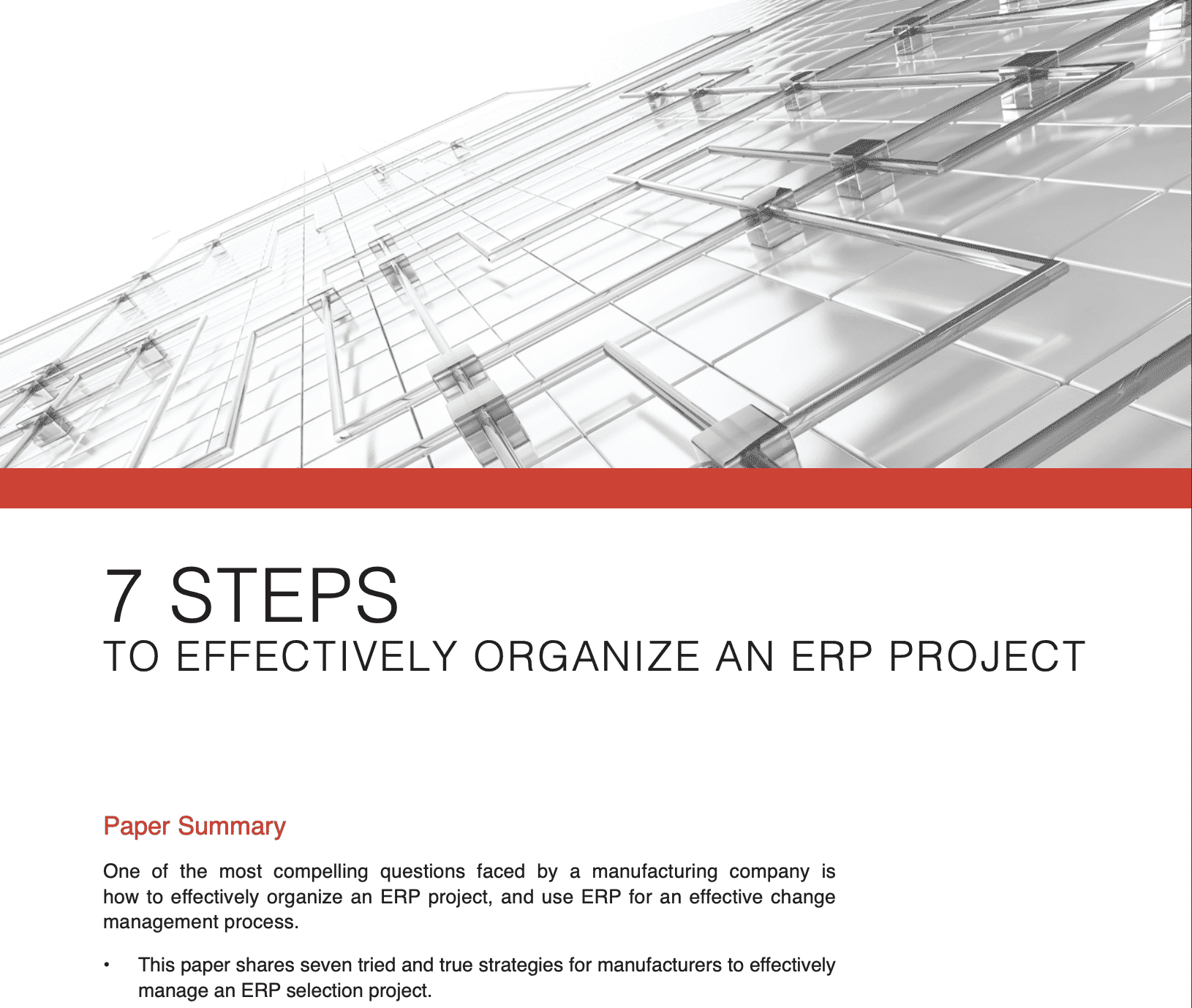Smart Implementation: 6 Critical Change Management Strategies
A new ERP system offers a rare opportunity to transform your company by increasing efficiency, enabling new capabilities and improving business performance. But, while a modern ERP solution can supercharge your organization, its implementation is one of the most complex and high-risk projects you will ever undertake.
Of all the possible errors you can make, poorly executed change management (or none) is perhaps the most avoidable cause of project problems and failure. Resistance to change, even positive change, is normal and expected human behavior – and plans must be made to minimize its impact.
It’s important to understand that change management is not a discrete phase of implementation. Instead, it should be woven throughout the project, embedded in the methodology and infused in the project team culture.

Change Management Strategies
With that in mind, here are six change management strategies designed to support and enable a successful ERP implementation:
1. Develop and share the vision
Determine what your post-implementation organization will look like and how it will run – and then share it with your organization.
Every company expects a new ERP solution to “transform” their business. But what exactly does that mean? Developing the desired future state – and then communicating it throughout the organization – is the key first step to successful change management.
2. Articulate the Case for Change
Ensure that every person at every level of your company understands why it is vital to re-make core business processes and implement a new ERP solution.
It’s critical to clearly articulate the case for change to your entire organization. What’s more, we encourage clients and the implementation teams to communicate project scope, rollout strategy and implementation schedule at the start of the project.
3. Mobilize and align leaders
Create a guiding group of leaders who share a common vision for your organization’s transformation and embrace the changes to come.
These top managers must thoroughly understand and communicate the benefits of the project and position it as a top-priority business transformation initiative.

7 Steps to Effectively Organize an ERP Project
The 7 Steps to Effectively Organize an ERP Project is designed for ERP project teams from today’s forward-thinking manufacturing and distribution organizations.
Read tried and true strategies for manufacturers to effectively manage an ERP selection project. See what it takes to be successful and more with this Download.
4. Engage with employees and stakeholders
Analyze the impact of every change, and communicate often with every employee, team and function that will be affected.
An important tactic when it comes to organizational change management is to develop and execute a detailed employee communication plan. Your plan should cover what will be communicated, why, to whom (audience), by whom, when, and how. All communications should include the project scope, objectives, milestones, and deliverables, present critical success factors and approaches, and discuss the transition to the new solution.
Also, it’s vitally important to identify key stakeholders – influencers – within your business and determine their understanding of, and level of support for, the ERP initiative. Make a plan to maintain and boost their knowledge and support throughout the project.
And, on an ongoing basis, assess the readiness of your business and people for change. Monitor the mood, enthusiasm, morale and level of support of your people by conducting mid-implementation check-ins.
5. Create the future organization
Develop and design the desired organization and future state.
Analyze the current condition of your business, locations and departments in terms of processes, organization and people systems. And, most important, make a transformation plan. This plan should detail the actions, responsibilities (and a timeframe) to get your organization to a new endpoint.
Define new processes using industry best practices, and adapt them to your specific needs as necessary. Assess job redesign and competency requirements for the new environment. And you also will want to analyze HR implications such as performance management, compensation and classification, recruiting, hiring and on-boarding, etc.
6. Prepare and equip your workforce
Enable your people to thrive in the transformed organization.
This phase is more than simply training your workers on a new technology – it usually requires significant job redefinition, skill acquisition and organizational design changes. Determine new competencies that will be required.
Make the effort to assess your workforce in terms of skills, abilities, experiences and capabilities, and assess any staffing impacts that will come with the new ERP solution. Then develop, plan and implement training strategies to close learning gaps. And, well before go-live, help everyone – end-users, leaders, implementation team members, process owners, customers and suppliers – clearly understand how their processes and work will be impacted.
At its foundation, the key to effective change management is to communicate comprehensively and frequently about the project – and to articulate the case for change clearly and consistently. And it is critically important to reinforce and reiterate this messaging to ensure all levels of your organization stay focused on the benefits that will come with the future state – and not on the disruptions and uncomfortable changes that come with ERP implementation.
How can you improve the odds of ERP success?
We asked our expert consultants for their advice, and then compiled their insight into a new ebook,
7 Essential Strategies for a Successful ERP Project.

Table of Contents
More ERP material...
AI in Food and Beverage Manufacturing
Discover how AI is revolutionizing food and beverage manufacturing, enhancing quality, reducing…
How ERP for Quality Control Eliminates Manual Documentation Chaos
This post will examine why managing quality records outside of an ERP…
Assessing Your AI Maturity
This article breaks down how businesses can measure their AI maturity to…



